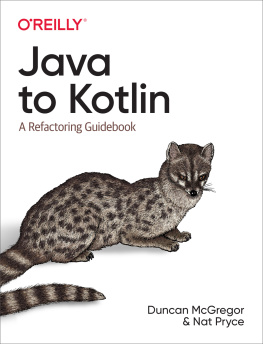STRAIGHT
BLAST GYM
N othing about Conor McGregors upbringing suggested that he would change the face of the fight business. There was no reason to believe that he was anything remarkable based on his early record in the mixed martial arts game. It would have been perfectly reasonable to dismiss him as delusional when he quit his first job and insisted, after meaningless victories on regional cards, that he was the fucking future. But through stubbornness and self-belief, combined with a remarkable work ethic and an open and keen mind for the intricacies of martial arts, McGregor would come to outgrow the fight game itself and muscle out other famous athletes from more mainstream sports in the headlines of the worlds back pages. At every stage of the journey, things could have gone another way, and it wasnt until he was more than five years into a seemingly dead-end career as a fighter that he was able to train under optimal conditions and get off social welfare. But McGregors success stands as evidence that world-class facilities are not the only way of producing a world-class fighter. Many of the greatest fighters who have ever lived started their journey in a shed.
* * *
Tom Egan was a normal sixteen-year-old whose hobby was martial arts more accurately, a karate-inspired form of kickboxing. When a lad from Crumlin joined Egans school in Lucan, the young Dubliner noticed an unusual intensity in the standoffish newcomer. As it turned out, this new boy, Conor McGregor, was also interested in martial arts. More than interested perhaps even obsessed. From his earliest days, McGregor had been fascinated by the notion of combat in the ring, on the street, wherever it might conceivably take place. McGregors formative years had been spent in Crumlin, where he had joined the local boxing club, but his parents had recently moved to Lucan, uprooting him from his friends, his hangouts and even his gym, which he now struggled to get to as regularly. He was as uncomfortable with the move as plenty of young men would be.
Through his early childhood, Conor had been more interested in football than in fighting, but it was a need for physical activity that spurred him on more than a great love of the teams and players. In an interview with the Irish Independent, in 2015, he mused on how some people get a little weird, with a tribe-like mentality towards their team. Conor observed that almost everyone he knew in Ireland supported either Liverpool or Manchester United, and while his father spent his early life in Liverpool, the Dubliner reflected that United were probably his team. But by the time his family moved to Lucan, the premiership dreams had fallen away and Conor McGregor was far more invested in the sweet science the bruising business boxing. When he was eleven years old, he recounts, he found himself outnumbered by a group of boys who had the intention of roughing him up. To hear McGregor tell it, one lad threw a punch and the young Dubliner slipped it, shuffled his feet and exclaimed Muhammad Ali! Like the great John L. Sullivan of legend, the first heavyweight champion of the world and the child of Irish parents, Conor McGregor has always spun a great yarn. I done the Ali shuffle! Im only eleven years old, I done the Ali shuffle, threw a left hook. Unfortunately even in his own retelling, our hero fell victim to the numbers. It was me versus six of them and I ended up getting my arse whooped.
By his teens McGregor was an avid boxer, while Tom Egan was involved in karate and kickboxing, but neither was a purist. They both enjoyed the new American reality television show The Ultimate Fighter, in which mixed martial arts fighters competed week-by-week to force their way into the Ultimate Fighting Championship the biggest show in the game. Much of the conversation between the two young scrappers was dominated by the subject of fighting, the Ultimate Fighting Championship and martial arts technique. When Egans family moved out to Newbridge, his parents allowed him to convert a shed on their new property into a gym of his own. Egan and McGregor would often head out to this shed and, in the words of McGregor, punch the head off each other. Egan, moving on from kickboxing, began training in Newbridge with a Brazilian jiu-jitsu blue belt named Mick Aldridge. Excluding the largely ceremonial red belt ranks, there are only five belts in Brazilian jiu-jitsu: white, blue, purple, brown, and black. They arent given easily and few academies have grading criteria. You get the belt when your coach feels you deserve it and it could take half a decade or more between belts, or just a year.
Like Conor McGregor, Tom Egan wanted to keep improving and while a blue belt in Brazilian jiu-jitsu was rare enough in Ireland in the early 2000s, Egan began seeking out more experienced teachers. In his search for a coach, one name kept coming up. The name of a man who became responsible in a very large part for the rise of Conor McGregor and mixed martial arts in Ireland: John Kavanagh.
THE GODFATHER OF IRISH MMA











